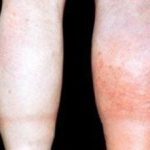 Semi‐solidified mass in the bloodstream formed of an aggregation of blood factors, primarily platelets and fibrin, with entrapment of cellular elements. Also called coagulum.
Semi‐solidified mass in the bloodstream formed of an aggregation of blood factors, primarily platelets and fibrin, with entrapment of cellular elements. Also called coagulum.
A soft, coherent, jellylike mass resulting from the conversion of fibrogen to fibrin.
A soft mass of coagulated blood in a vein or an artery.
A mass of blood that has hardened from a liquid to a solid. A blood clot helps “plug” an injury and stop blood flow.
Gelatinous mass made up of red blood cells (erythrocytes), white blood cells (leukocytes), and platelets in a meshwork of the protein fibrin; it results from the process of blood coagulation.
A solid mass formed as the result of blood coagulation, either within the blood vessels and heart or elsewhere (compare thrombus). A blood clot consists of a meshwork of the protein ‘fibrin in which various blood cells are trapped.
A blood clot arises when blood comes into contact with a foreign surface — for example, damaged blood vessels — or when tissue factors are released from damaged tissue. An initial platelet plug is converted to a definitive clot by the deposition of FIBRIN, which is formed by the clotting cascade and erythrocytes.
A mass formed when blood solidifies into a gel.
The clumps that result from the sticking together (coagulation) of blood.
In the context of hematology, the blood has the remarkable ability to transform into a gelatinous substance, facilitating the cessation of bleeding. This process, known as blood clotting, can occasionally result in the obstruction of blood flow within a blood vessel.
